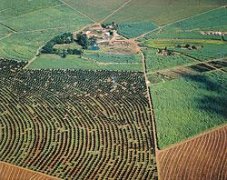A brief introduction to the planting market price of Xido boutique coffee beans in San Juan, Honduras.

Honduras 'high-quality coffee uses water washing to treat coffee beans, usually after soaking, in the soaking time, defective fruit will surface, can be discarded first. The good fruit is then placed in a fruit peeler and peeled off by the rotating force of the machine. The peeled fruits are screened by machines to select excellent quality fruits. Usually larger fruits represent better maturity. Honduran coffee is sun-dried, so it always has a light fruity taste
Honduras is no less geographically endowed than neighbouring coffee-producing countries such as Guatemala and Nicaragua for coffee production. There are 280,000 hectares of coffee plantations in Honduras, mainly small coffee plantations, most of which are less than 3.5 hectares. These coffee plantations account for 60 per cent of Honduras 'coffee production.
In coffee plantations, because they are grown in mountainous areas, coffee beans are picked by hand and carefully processed to produce better coffee beans. Honduras harvests 3 million bags of coffee every year, providing a variety of coffee quality to everyone, and is now one of the top ten coffee exporters in the world.
Honduran coffee beans are larger in shape, uniform in size, uniform in color and shiny. To make harvesting easier, farmers prune coffee trees to no more than 150 centimeters, which requires a ladder to pick, which takes time and can damage the tree by bending branches. Because each fruit of coffee beans has a different maturity period, to maintain the good quality of coffee beans, it is necessary to use artificial methods to pick and then select mature fruits. The same branch of coffee fruit, picking time often takes several weeks to harvest all
Honduran coffee may seem foreign to many coffee drinkers.
Honduras is no less geographically well-placed to produce coffee than its coffee-producing neighbours, such as Guatemala and Nicaragua.
Honduras, however, had previously been less well known in the consumer market because of its lack of strong support for raw bean handling and transportation. However, in recent years, the country has begun to change dramatically, and the emphasis on the coffee industry has made Hondura coffee slowly open up internationally.
Honduras has six major coffee producing regions, including Santa Barbara, Copan, Ocotepeque, Lempira, La Paz, and El Paraiso in the southeast. Honduran coffee tastes less acidic and caramel tastes sweeter.
Coffee from these five different regions also tastes slightly different, some slightly sour, some have a unique aroma. The quality is not bad at the moment, but coffee prices in the country are actually quite competitive at the moment because it is still developing its popularity.
Honduras 'high-quality coffee uses water washing to treat coffee beans, usually after soaking, in the soaking time, defective fruit will surface, can be discarded first. The good fruit is then placed in a fruit peeler and peeled off by the rotating force of the machine. The peeled fruits are screened by machines to select excellent quality fruits. Usually larger fruits represent better maturity. Honduran coffee is sun-dried, so it always has a light fruity taste
The term boutique coffee was first coined by Ms. Knudsen in Coffee and Tea magazine in the United States, when Ms. Knudsen served as B.C. Ireland's coffee buyer in San Francisco, she is very dissatisfied with the industry's neglect of green coffee bean quality, and even some large roasters mix a large number of robersta beans into the mixed beans, so she proposed the concept of fine coffee to advocate the industry to improve quality. The term is used to describe coffee beans that have distinctive flavor characteristics and are grown in special environments. Its use at international coffee conferences spread quickly.
In fact, according to Ms. Knudsen, people started drinking fine coffee, but then as coffee demand continued to grow, new coffee varieties were discovered and used, and the quality of coffee declined. Later, people gradually abandoned this bad and bad coffee and began to switch to other drinks. In this context, Ms Knudsen's re-awakening to the value of fine coffee has led to a fine coffee craze. In the United States, Starbucks has emerged as a representative of the pursuit of boutique coffee enterprises and stores. The market for specialty coffee also continued to grow, becoming one of the fastest-growing markets in the foodservice industry in the 1990s with the proliferation of specialty coffee retailers and cafes, reaching $12.5 billion in the United States alone in 2007. Fine coffee has become the fastest-growing coffee market. Coffee producing and importing countries around the world are aware of the huge potential of the specialty coffee market and continue to make efforts in specialty coffee production and preparation.
The coffee beans of Honduras are large in shape, uniform in size, uniform in color and shiny. To make harvesting easier, farmers prune coffee trees to no more than 150 centimeters, which requires a ladder to pick, which takes time and can damage the tree by bending branches. Because each fruit of coffee beans has a different maturity period, to maintain the good quality of coffee beans, it is necessary to pick them manually and then select the ripe fruits. The coffee fruit of the same branch often takes several weeks to harvest.
Important Notice :
前街咖啡 FrontStreet Coffee has moved to new addredd:
FrontStreet Coffee Address: 315,Donghua East Road,GuangZhou
Tel:020 38364473
- Prev

The origin and development of San Juan Xiduo fine coffee beans in Honduras
Honduras is no less geographically endowed than neighbouring coffee-producing countries such as Guatemala and Nicaragua for coffee production. There are 280,000 hectares of coffee plantations in Honduras, mainly small coffee plantations, most of which are less than 3.5 hectares. These coffee plantations account for 60 per cent of Honduras 'coffee production. In the coffee garden, because of the planting area
- Next

Planting situation of San Juan Xido boutique coffee beans with large particle shape, geographical location gas
The granules of coffee beans in Honduras are large in shape, uniform in size and glossy in color. In order to facilitate harvesting, farmers will prune the coffee trees to no more than 150 centimeters, because if they grow too high, they have to set up ladders to pick, which is not only time-consuming, but also may damage the trees by bending branches. As the ripening period of each fruit of the coffee bean is different, it is necessary to keep the coffee bean good.
Related
- Detailed explanation of Jadeite planting Land in Panamanian Jadeite Manor introduction to the grading system of Jadeite competitive bidding, Red bid, Green bid and Rose Summer
- Story of Coffee planting in Brenka region of Costa Rica Stonehenge Manor anaerobic heavy honey treatment of flavor mouth
- What's on the barrel of Blue Mountain Coffee beans?
- Can American coffee also pull flowers? How to use hot American style to pull out a good-looking pattern?
- Can you make a cold extract with coffee beans? What is the right proportion for cold-extracted coffee formula?
- Indonesian PWN Gold Mandrine Coffee Origin Features Flavor How to Chong? Mandolin coffee is American.
- A brief introduction to the flavor characteristics of Brazilian yellow bourbon coffee beans
- What is the effect of different water quality on the flavor of cold-extracted coffee? What kind of water is best for brewing coffee?
- Why do you think of Rose Summer whenever you mention Panamanian coffee?
- Introduction to the characteristics of authentic blue mountain coffee bean producing areas? What is the CIB Coffee Authority in Jamaica?

